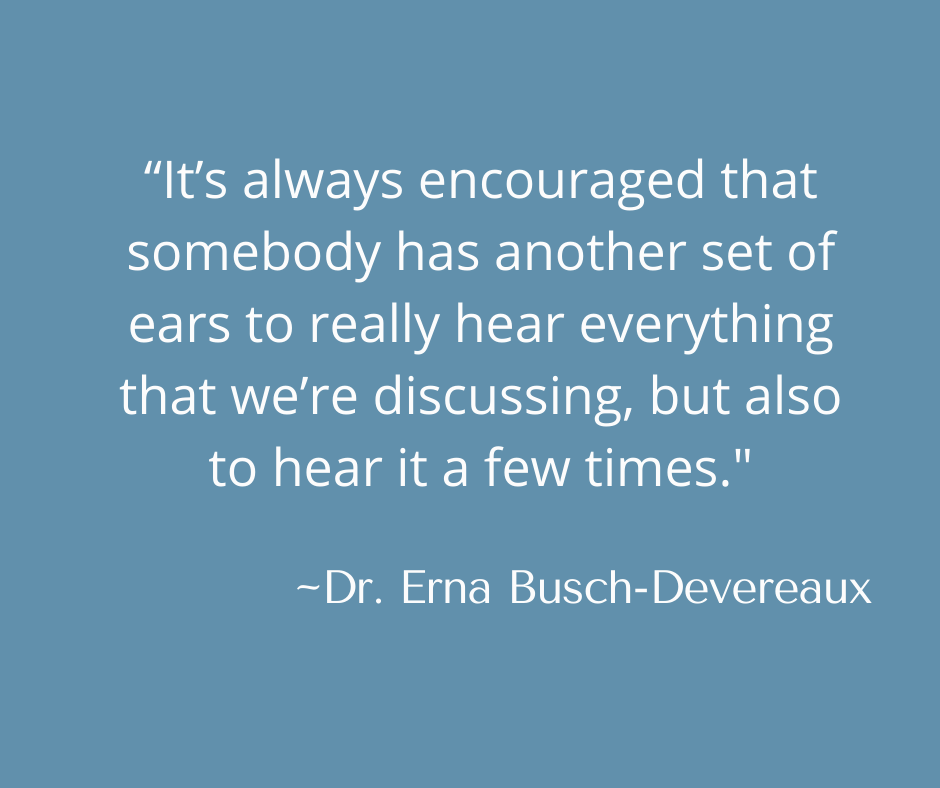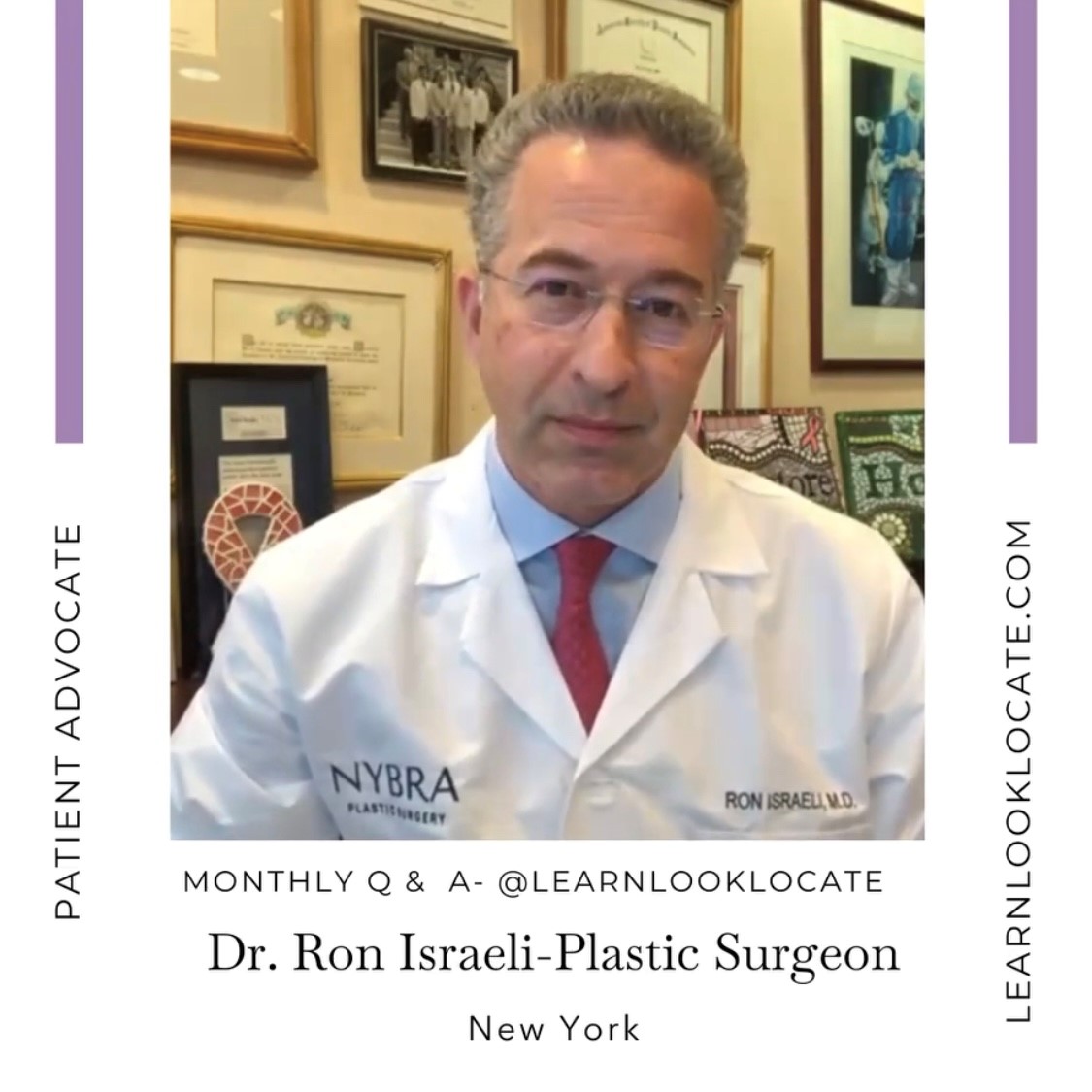Breast Cancer: a Breast Surgeon’s Perspective
April 16, 2021
Dr. Erna Busch-Devereaux knows that you’re aware of the number of people newly diagnosed with breast cancer every year.
“I think we all appreciate the magnitude of the problem with breast cancer in the United States, but the good news is that death rates have been decreasing pretty significantly over the last decade or two,” she said, opening this month’s Be Informed Lecture.
Dr. Busch-Devereaux is the Chief of Breast Surgery, Huntington Hospital, Northwell Health. Breast surgeons do more than simply operate: they also manage screening and monitoring—particularly for high risk patients—and work closely with plastic surgeons and oncologists to ensure optimal results for their patients. She joined NYBRA Patient Empowerment Program Director Mollie Sugarman for a conversation on where we are and where we’re going when it comes to breast cancer detection and treatment.
The vast majority of risk factors for breast cancer are out of our control.
“There are many things that affect the risk of breast cancer, and many of these things are just not in any of our control, with the exception of perhaps obesity, smoking, and alcohol consumption.”
Dr. Busch-Deveraux noted that genetic mutations presented the most significant of many factors—including female sex, family history, age at first menstrual period, breast tissue density, and more—though even those only account for about twenty percent of disease.
In absence of a genetic mutation, she said there were several computer models and computation strategies that doctors use to assess a person’s risk of breast cancer, taking into account other risk factors. Patients with a lifetime risk of greater than twenty-percent are considered high enough risk to consider adding more rigorous elements to typical breast cancer screening and prevention.
Imaging plays a key role in screening, diagnosis, and monitoring.
The bottom line is that improved imaging tests save lives. Most patients are familiar with mammography, which is very effective, but not perfect, according to Dr. Busch-Deveraux.
“We use a number of different modalities to give us the best chance of trying to find breast cancer before it becomes clinically evident.”
Newer 3-D mammograms are an important tool that allows clinicians to focus on different areas of the breast in a way that is not possible using traditional mammography. Practitioners now use ultrasounds to complement mammograms, particularly in women with dense breast tissue. Patients with elevated risk may also undergo an MRI.
“When there are questions on the other imaging, MRIs are used to help answer questions. We also use it on women with breast cancer to get a better look at the extent of the cancer, judging the response to pre-surgical treatments, and to look at the opposite breast,” she explained.
Treatment tends to be multimodal.
“Breast cancer really requires a number of different treatments—not that everyone gets every treatment we have—but the goal here is to cure it, and so we do a much better job of curing breast cancer when we use different therapies.”
Surgery, radiation, chemotherapy, hormonal therapy, and targeted therapies are the main modalities available for breast cancer treatment.
Staging dictates which additional therapies a patient might need after surgery.
“Once we get the results back from the surgery, we have to come up with the stage. Certainly we get a clinical stage based on what we think is going on prior to surgery, but once we have the pathology results, that’s what helps us categorize cancers into different stages.”
It’s important to note that cancer staging and tumor grading are different things. Simply put, “the grade is actually based on what the tumor looks like under the microscope.” Cancer stage, on the other hand, takes the full extent of the cancer into account, including tumor size, tumor grade, lymph node status or involvement, hormone receptor status, and HER2 status.
Staging helps to determine anticipated survival and which adjuvant therapies might be wise for a given patient. Systemic treatments include chemotherapy and hormone therapies.
Chemotherapy is a first step for some patients.
“Sometimes we reverse the order of treatment, and there are some situations where we might think about using chemotherapy prior to doing the surgery,” she explained.
This approach most often applies to patients whose tumors are very large and patients who have a lot of clinically evident lymph node involvement. Preoperative chemotherapy can reduce the size of the tumor or disease, thus limiting the amount of surgery needed.We can shrink the tumor or the disease in the armpit and limit the amount of surgery needed. It can also help women who are HER2 positive or those who have triple negative cancer get started with the biggest part of the therapy while also potentially limiting surgery.
Practitioners are selective about which patients receive chemotherapy.
Practitioners use increasingly sophisticated tests and techniques to determine which additional therapies are indicated. Chemotherapy is most commonly recommended for patients with tumors that are hormone receptor negative.
“We don’t want to give everybody every treatment that we have, but certainly we want to give people treatments that are going to help cure them, despite the fact unfortunately that many of these treatments still have side effects.”
It’s safe to save the nipple.
“As long as the cancer doesn’t directly involve the nipple, we now have maybe 15, 20 year data that it’s safe to preserve the nipple.” Dr. Busch-Devereaux has yet to see new cancer in the nipple remnant.
Nipple sparing mastectomies reduce the number of reconstructive steps. They also work well with advanced reconstructive procedures. “I think now that we’re going to attempt these nerve sparing procedures, it’s even another reason to give it strong consideration.”
Patients should feel comfortable asking their breast surgeons to repeat themselves.
Dr. Busch-Devereaux explained that it’s important to try to have another person with you at your appointment and to accept and understand that you will not be able to absorb everything at once.
“It’s always encouraged that somebody has another set of ears to really hear everything that we’re discussing, but also to hear it a few times. The internet is a wealth of information—not that it’s all good, but—there’s a lot of good on the internet, and things that are much more up-to-date than pamphlets or booklets. But I think patients have to hear things several times, because understandably, they don’t hear everything the first time through. And so I always encourage patients to ask questions, call back with questions, when you think of something write a list. I tend to think that the breast surgeons, at least in this general area, do have fairly thorough discussions with their patients.”
Read on for highlights from her presentation or watch the whole discussion here.
Learn Look Locate’s Ask a Plastic Surgeon Series with Dr. Israeli
Learn Look Locate is an organization dedicated to promoting critical education for early breast cancer detection. They recently launched their “Ask a Plastic Surgeon” series, featuring…
